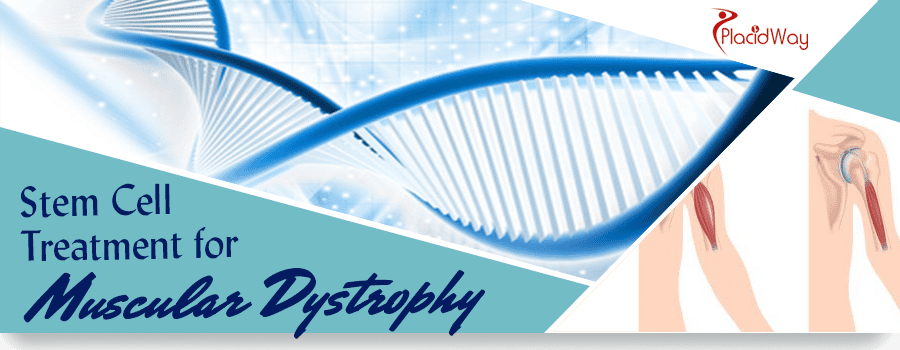
Stem Cell Treatment for Muscular Dystrophy Abroad
Muscular dystrophy, also known as MD, is a muscle disease that is often passed from one generation to the next. The condition involves a gradual weakening or damage to muscle fibers of the voluntary muscles, such as those that control walking, bending, turning and lifting. Several types of muscular dystrophy damage not only connective tissues in the extremities, but may damage the heart muscle, as well as involuntary muscles such as internal organs.
Muscular dystrophy is believed to be caused by a deficiency of a protein called dystrophin, essential for muscle growth and function. This deficiency is often genetic for many individuals. To date, medications to treat muscular dystrophy are generally designed to help reduce symptoms of muscle spasms, muscle weakness and stiffness, while anti inflammatory corticosteroid medicines such as prednisone are often given to help improve muscle strength. In some cases, drugs that suppress immune system function offer some help in slowing dying muscle cell damage.
Today, therapies utilizing embryonic stem cells for implantation or transplants may offer more effective benefits to muscular dystrophy patients than drug therapies, physical therapy, or assistive devices such as canes, walkers and wheelchairs. The most common type of muscular dystrophy is called Duchene's, but there are a half dozen others that affect a variety of muscles in the body in different ways.
Duchene's muscular dystrophy is linked to a genetic disease process caused by a mutation in the dystrophin gene. Dystrophin is necessary for health and growth of cells and is responsible for stimulating muscles and muscle function and movement. Stem cell research is focusing on restoring levels of dystrophin in patients diagnosed with Duchene's muscular dystrophy.
While there is no cure to date for muscular dystrophy, stem cell research and implantation of healthy embryonic cells into individuals diagnosed with various forms of muscular dystrophy may improve function and mobility as well as slow the muscle-wasting process.
Clinical Studies Under Way
Currently, clinical studies and trials utilizing a variety of stem cell approaches are under study around the world. A stem cell research facility in the Ukraine has treated nearly 400 patients with stem cell therapy and is following their progress. Currently, observations have determined that stem cell transplantation considerably reduces the progression of the disease process at all stages, and enables patients to enjoy deeper reflexes, internal organ function, and physical and mental activities.
Benefits to long term health and wellness following embryonic stem cell transplantation is an ongoing endeavor, with patients so far required to receive stem cell replacement therapy approximately every 6 to 8 months.
The University of Colorado at Boulder has been able to specifically identify a muscle stem cell that may be utilized to restore and revitalize muscle tissues damaged by muscular dystrophy, while in Australia, researchers at the University of New South Wales are focusing on regenerating damaged tissues that may help individuals suffering from the ravaging muscle wasting processes of muscular dystrophy and myopathy.
Researchers throughout Ukraine, Australia, Italy, and the United States have focused on stem cell therapies for individuals diagnosed with limb-girdle muscular dystrophy, which causes a slower but gradual increase in muscle weakness.
Research, clinical trials, therapies and treatments in stem cell implantation and transplants will continue in this field as researchers around the globe search for greater understanding of the best type of stem cells to be utilized in treating all forms of muscular dystrophy, offering hope to millions affected with the muscle wasting disease.
If you want to find out where you can get stem cell therapy for muscular dystrophy, or you want to ask us a question, or maybe you need assistance, let us know by using the button below.

Stem Cell Therapy Abroad